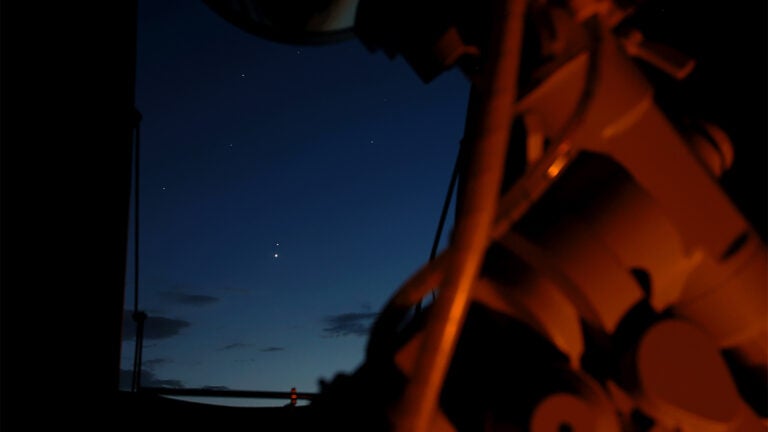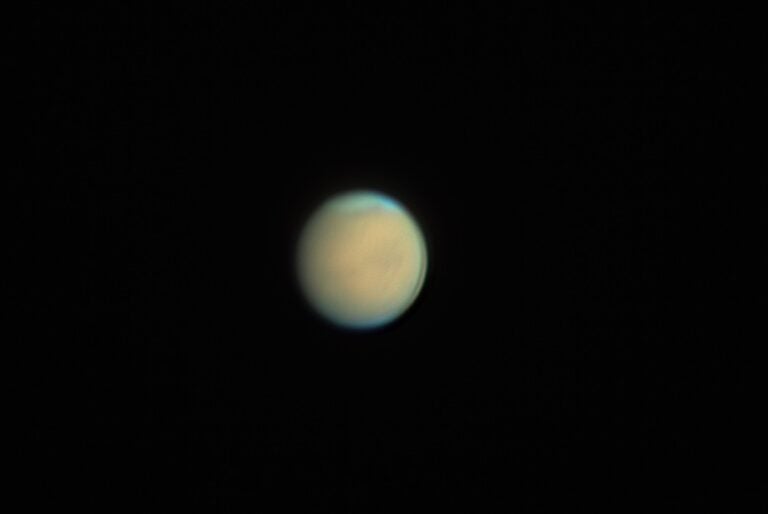Q: Can Earth-like lightning and thunder occur on a planet or Moon that exhibits storms in its atmosphere?
A: Yes! The cameras on both the Voyager and Galileo spacecraft detected lightning in Jupiter’s atmosphere. In 2011, the Cassini probe cameras detected a faint flash of lightning on Saturn, as well. The flashes on both gas giants were associated with recognizable storm systems.
A reliable way to detect lightning turns out to be searching for radio waves emitted during the flash. This method doesn’t depend on lighting conditions or whether a camera is pointed at the “right” storm.
Lightning forms as a discharge from one region that has mostly one type of charge (i.e., negative) to a different area that has another type of charge (positive). This often occurs in water clouds because water has polarity — an uneven distribution of electric charge — and can therefore form charge more easily than other molecules that are non-polar. The lightning on both Jupiter and Saturn occurs in the water clouds of the gas giants, and those clouds form at several times Earth’s surface atmospheric pressure.
Although Titan, Saturn’s largest satellite, has storms in an atmosphere thicker than Earth’s, Cassini hasn’t detected any evidence of lightning flashes or lightning-generated radio waves on the moon. Titan’s atmosphere, however, does not contain much water. Venus has a thick atmosphere and little water, but the Venus Express mission has detected convincing evidence for radio waves associated with lightning. In fact, scientists estimate that the planet has cloud-to-cloud lightning in its atmosphere about 25 percent of the time, although no flashes have been seen so far. Venus’ atmosphere is 90 times thicker than Earth’s and contains clouds of sulfuric acid, so its lightning may have a different origin from our planet’s.
Glenn Orton
Jet Propulsion Laboratory, California Institute of Technology, Pasadena










